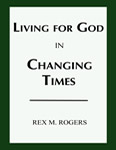Throughout the Middle East and North Africa, and for that matter many other regions, people believe in something called the Evil Eye. It’s a superstition, but it’s real to those who believe it.
The Evil Eye is the idea that someone can look at you and, whether intentional or not and whether realized or not, cause you discomfort, injury, or bad luck. To “give someone” purposely the evil eye is the height of social ill will. The Evil Eye may also be sourced in demons or other worldly spirits that have in their power the ability to plague people with all manner of bad developments.
In the Middle East it is also possible, according to belief in the Evil Eye, to induce evil upon a person unwittingly, simply by calling attention to something good in his or her life. For example, those who believe in the Evil Eye would be horrified to hear you say they have “a lovely child” or are living in “a very attractive home.” Such compliments invite the negative attention of the Evil Eye.
Because people really do believe in the Evil Eye, charms of all shapes and sizes have been developed to ward off the potential and power of its curse. Usually such charms are made of dark blue glass or some other hard polished material on which a light blue circle is imprinted, which in turn is centered by a dark circle or dot. The design suggests an eye.
To me it’s paradoxical: wear an eye to ward off the effects of the Evil Eye. But what people believe they believe. I’ve seen these charms in shops in Cairo, Istanbul, cities in Cyprus, Beirut and other Lebanese cities. I’ve seen people wearing them on the street as necklaces, bracelets, or some other amulet. And I’ve seen them hanging from the rearview mirrors of cars.
It’s sad, actually, for the Evil Eye is nothing but a superstition, and the charms are nothing but powerless talismans. You might “give someone the evil eye,” as is said in America, but you’re giving them nothing but a glaring, frowning stare. You nor I nor anyone else holds the power of good or bad luck over anyone.
One reason we don’t hold the power of good or bad luck is that we’re finite beings. Another is that there’s no such thing as luck of any kind. Certainly Christians should believe this, though some Christians in the Middle East are susceptible to the cultural influence of the Evil Eye. But from the perspective of Christian theology you must recognize that the idea of a Sovereign God and luck are mutually exclusive concepts. Both cannot exist.
Yet people persist in believing in luck, “just in case.” Americans don’t often wear blue charms to ward off the Evil Eye, but Americans do, more often than we generally admit, embrace a host of good luck charms. Just walk through a casino and ask gamblers if they believe in luck; then ask them what’s their good luck charm. You’ll hear about rabbits feet, a special penny in a shoe, a certain piece of clothing, beads, baubles, crystals, crosses, even a given woman, and more. Professional athletes aren’t much behind gamblers in their belief in luck and lucky charms.
So while we don’t see many Evil Eye charms in America (we will), we do see our own version of lucky artifacts. Sad thing is though: it’s all a waste of time and money.
© Rex M. Rogers – All Rights Reserved, 2012
*This blog may be reproduced in whole or in part with a full attribution statement. Contact Rex or read more commentary on current issues and events at www.rexmrogers.com or follow him at www.twitter.com/RexMRogers.


